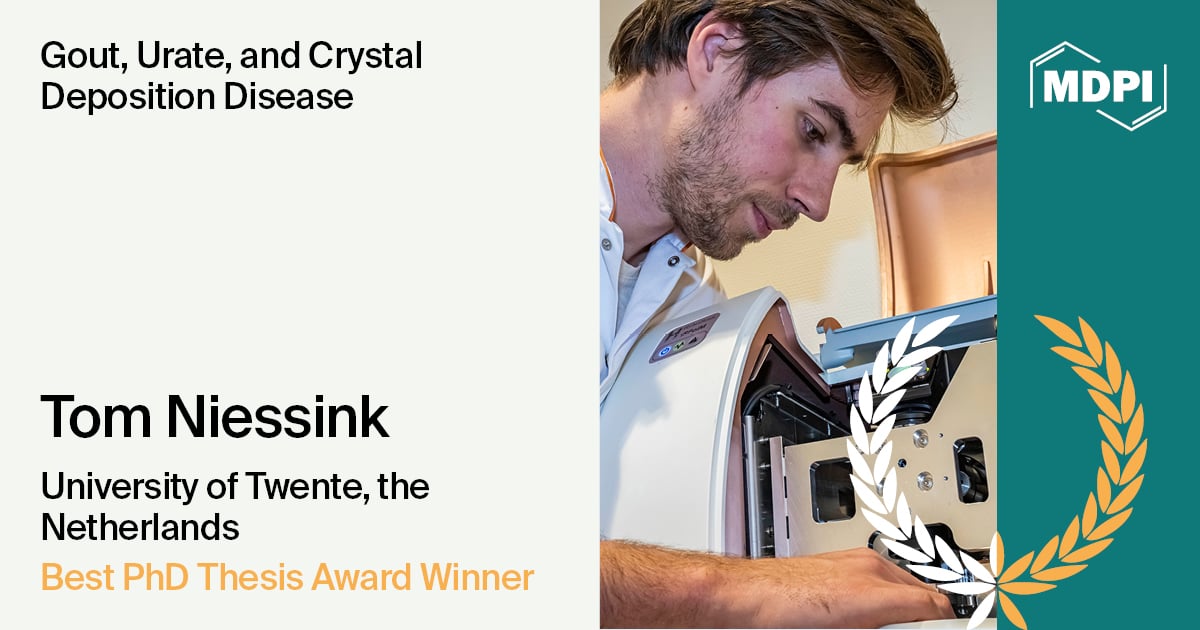
Interview with Dr. Tom Niessink—Winner of Gout, Urate, and Crystal Deposition Disease Best PhD Thesis Award
It is our great pleasure to introduce the winner of the Gout, Urate, and Crystal Deposition Disease (GUCDD, ISSN: 2813-4583) Best PhD Thesis Award for 2024—Dr. Tom Niessink.
Dr. Tom Niessink obtained his PhD degree in clinical scientist rheumatology from the University of Twente in 2024 under the supervision of Dr. Tim L Jansen (VieCuri Medical Centre). We were sincerely honored to interview Dr. Tom Niessink, providing an opportunity to delve deeper into his research journey and insight.
The following is a short interview with Dr. Tom Niessink:
1. Could you tell us a little bit about yourself and the scientific research you conducted during your doctoral study?
I am a biomedical engineer with a strong interest in the development of diagnostics. In recent years, therapies are becoming more tailored to the needs of individual patients. It is my belief that precision medicine starts with precision diagnostics—how can you treat precisely, if you do not understand what you are treating? I started out developing liquid biopsy tests for metastatic carcinomas such as breast- and prostate cancer. For my PhD I transitioned to rheumatology. The diagnosis of crystal-associated arthropathies such as gout and CPPD typically relies on the identification of the causative crystals with polarized light microscopy. It has long been known, however, that this is untrustworthy, especially as rheumatologists are often poorly trained in using the microscope. In my PhD project, we investigated Raman spectroscopy as a diagnostic tool, which proved to be highly reliable. My work primarily focused on diagnostic accuracy studies, though I also performed some exploratory research alongside.
2. Did you encounter any difficulties in carrying out this research? If yes, how did you overcome them, and what strategies did you use to stay focused and motivated?
Of course, I encountered some challenges. Diagnostic accuracy studies require the recruitment and analysis of hundreds of patient samples, which require a significant amount of administrative work. It is important to have a well-designed protocol and data management system as it is easy to lose track of your data if you have so many. Analyzing hundreds of patient samples using the same method is also highly repetitive work, which can become tiresome. For me, close contact with rheumatologists and their patients really helped me to stay motivated. It is easier to stay focused if I can directly see and feel the positive impact of my work.
3. Do you have some advice for doctoral students who have not yet graduated? Many doctoral students experience pressure and worry about their graduation being delayed.
You will never write the “perfect” paper and nobody else will ever will! It is easy to doubt your own work and spend hours obsessing over phrasing or your figure layouts, but it will probably not be the difference between a desk rejection or an accepted paper, so why would you? Rather than nitpicking tiny details, think about the big picture. What will be the story of your thesis and what milestones do you want to emphasize?
4. What is your current research interest and how do you plan to continue building on your research in the future? What are your long-term career aspirations?
I am currently working on further development of several diagnostic devices in oncology and rheumatology. For the coming years, I will do so from industry rather than academics. I really believe that the tools we have developed can have a positive impact on healthcare, but they will never reach their potential if they stay with me in the lab. Therefore, we must focus on making our tools available for patients worldwide, as their struggle is the driving force behind our work.
I am honored to receive this award, and I am very grateful to have a great team of supervisors who have guided me throughout my PhD. I especially want to thank the gout scientific community, which is a very welcoming and enthusiastic group of people. Interaction with my international colleagues at conferences such as ECN and GCAN was inspiring and instrumental in the success of my PhD.